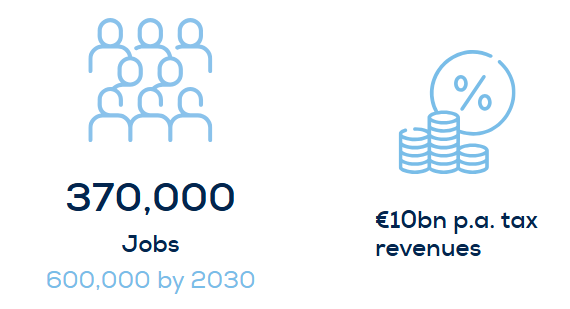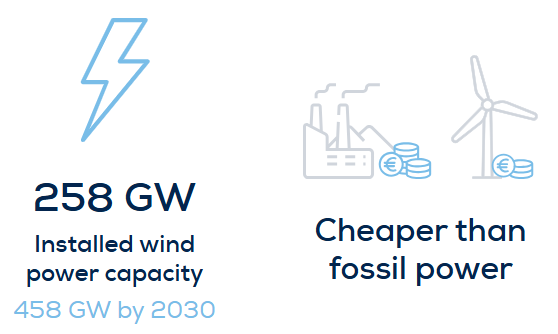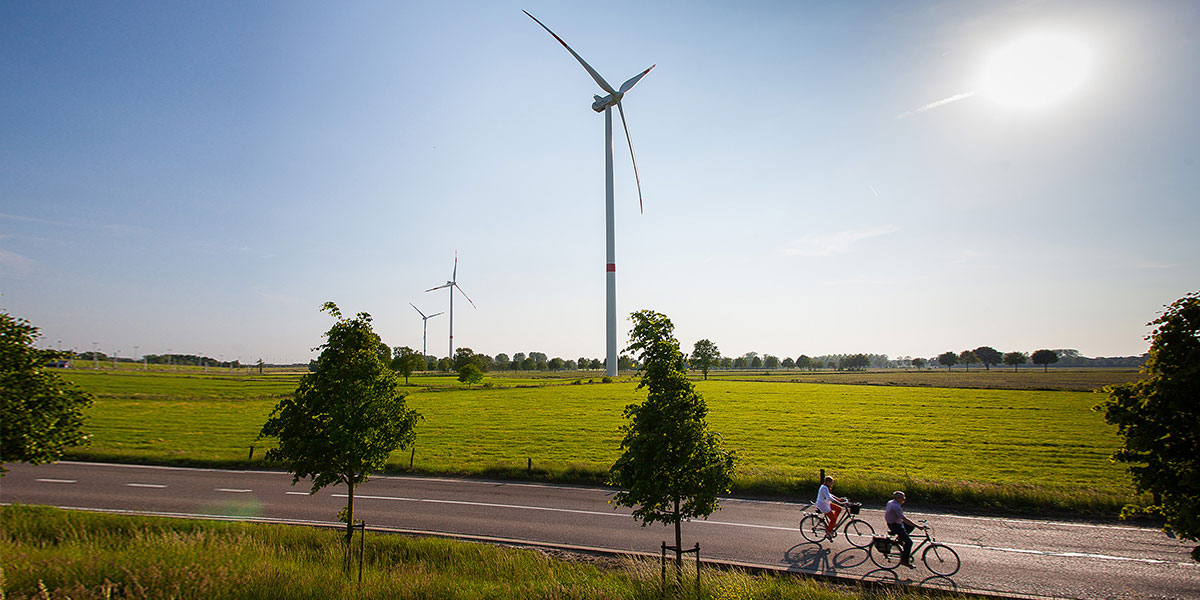Wind energy boosts Europe’s security, prosperity and competitiveness
European citizens and businesses want reliable, affordable and clean energy. The current geopolitical situation is a stark reminder that imported fossil fuels do not deliver that. Wind is homegrown, it’s uniquely placed to boost Europe’s energy security, prosperity and competitiveness while delivering on decarbonisation.
Security

The EU spends €500bn a year on energy imports – most of them fossil fuels. This has led to Europe’s dependence on volatile prices and foreign sources. Europe’s existing wind farms reduce fossil fuel demand by 100 bcm a year – 500 large oil tankers.
Wind is now 20% of the electricity consumed in Europe. It’s a reliable energy source. New onshore wind farms now run at capacity factors of 30-45%. That’s significantly higher than other sources of variable renewable power. And new offshore wind farms at 50%. You can build a stable power system around wind. Germany, Spain, Sweden, Denmark, the UK, Ireland, Portugal and Lithuania all get over a quarter of their electricity from wind. The wind industry takes its role seriously to protect wind farms from physical and cyberattacks by working together with relevant national authorities and international defence organizations such as the European Defence Agency and NATO.
Prosperity

Wind contributes €52bn to Europe’s GDP each year. Nearly 400,000 people work in Europe’s wind industry across 250+ factories. Wind farms boost local economies, especially in rural and coastal areas. Communities across Europe benefit from the more than €10bn of taxes which wind farms pay each year. Europe’s electricity consumers saved €100bn between 2021 and 2023 thanks just to the new wind and solar built those 3 years. More wind means lower energy bills.
Competitiveness

Wind and solar are the cheapest electricity sources, even with grid and system costs. Wind is scalable, faster to build than most other energy sources, and its costs are predictable. Large energy-consuming industries – chemicals, steel, aluminium, ICT, pharma, food/drink – want more power from wind and are signing more and more PPAs – last year with 9 GW of wind farms. For reference, that’s around half the electricity consumed in Greece.
85% of Europeans support the expansion of wind – and support is often higher among those who live close to a wind farm. They experience the advantages of wind energy first hand. But Europe is only building half the new wind needed to deliver its energy targets. The main reasons are cumbersome permitting, slow grid build-out, inadequate auction design and insufficient electrification. Electricity is still only 23% of energy consumption in Europe – China has overtaken that and is powering ahead on electrification.

Getting the most from wind and boosting Europe’s energy security, prosperity and competitiveness requires European policymakers to:
- Apply the new EU permitting rules. They work wonders. Germany is now permitting 7x as much onshore wind as 5 years ago.
- Invest massively in electricity grids. With better top-down planning to deliver climate neutrality, anticipatory investments, boosting system resilience, and filtering out zombie projects from grid connection queues – they’re clogging up the system.
- Remove barriers to electrification. Let industry get state aid to electrify with renewable PPAs, which are not just for onsite power. Remove non-energy taxes and charges from electricity bills so renewables become an obvious choice for consumers.
- De-risk wind investments with a stable pipeline of 2-sided Contract for Difference auctions. CfDs improve costs of capital and visibility on revenues and are good value for Governments.
- Support and strengthen the European wind supply chain to boost strategic autonomy and economic growth.

